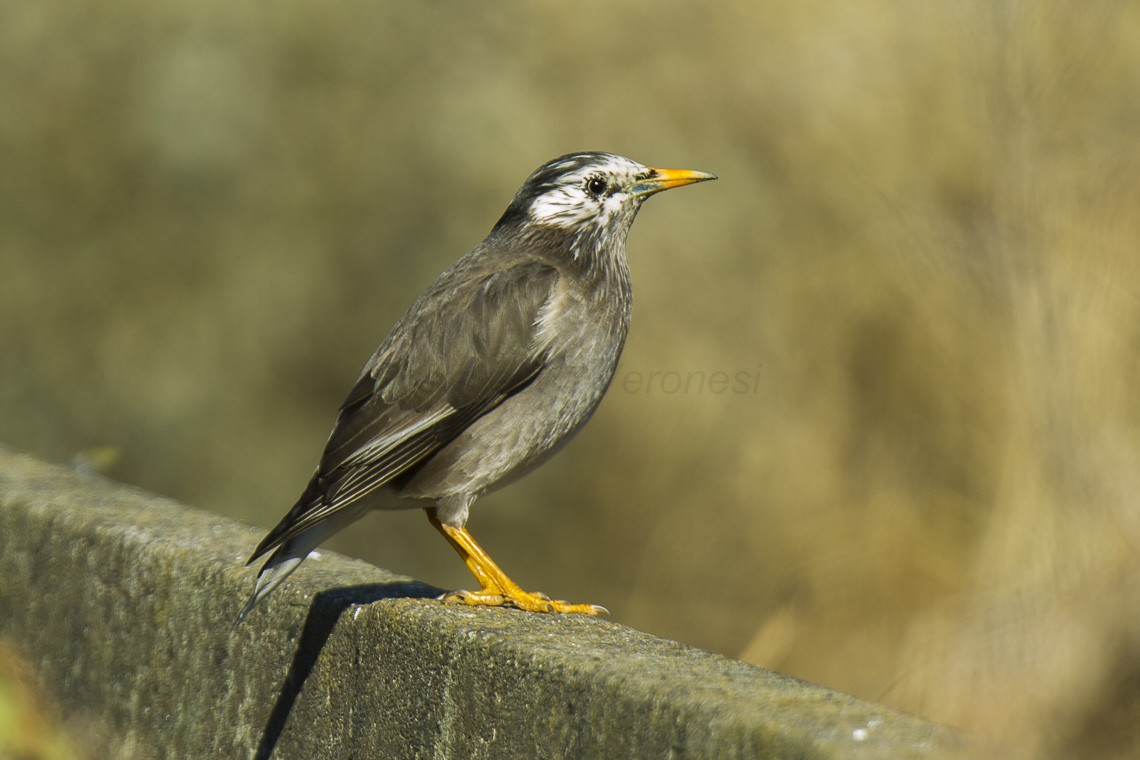White-cheeked Starling
A species of White-cheeked and Red-billed Starlings, Also known as Grey Starling Scientific name : Spodiopsar cineraceus Genus : White-cheeked and Red-billed Starlings
White-cheeked Starling, A species of White-cheeked and Red-billed Starlings
Also known as:
Grey Starling
Botanical name: Spodiopsar cineraceus
Genus: White-cheeked and Red-billed Starlings
Content
Description People often ask General Info
 Photo By Francesco Veronesi , used under CC-BY-SA-2.0 /Cropped and compressed from original
Photo By Francesco Veronesi , used under CC-BY-SA-2.0 /Cropped and compressed from original Description
Its dark grey and brown coloring give the talkative white-cheeked Starling a drab appearance. When gathering in flocks, the bird always seems to have something to say when foraging. It is most often seen in open areas like pastures and along forest edges. The starling also visits urban areas, especially locations with bird feeders.
Size
22 cm
Nest Placement
Tree
Feeding Habits
White-cheeked Starling is omnivorous, with a varied diet that includes invertebrates like insects, geckos, frogs, and earthworms. They also consume fruits such as cherries and mulberries, especially in winter. Feeding behavior involves foraging mainly on the ground in ploughed fields and grasslands, with a shift to more aquatic organisms during breeding season in Korean villages.
Habitat
The habitat of white-cheeked Starling encompasses open areas such as cultivated lands, pastures, and open woodlands, as well as urban environments like parks and towns. They favor sparse larch forests in some regions and are often found in riparian woodlands, preferring habitats that are not densely forested. These birds are also known to form communal roosts, which can be permanent for many years, and may travel considerable distances daily to reach foraging grounds.
Dite type
Omnivorous
People often ask
General Info
Feeding Habits
Bird food type
Distribution Area
The breeding range covers central and north-east China, Korea, Japan and south-east Siberia. In winter birds from colder regions migrate south to southern and eastern China, South Korea, southern Japan, Taiwan and northern Vietnam with vagrants reaching the Philippines, Thailand and Myanmar. There is a record from Homer, Alaska in 1998 which probably arrived with a ship (West 2002). It inhabits woodland, farmland, and open country and has also adapted to parks and gardens in urban areas. It is most common in lowland areas (usually below 700m in Japan). It has a varied diet which includes fruit and insects such as mole crickets. The breeding season lasts from March to July and often two clutches of eggs are laid during that time. The nest is built in a hole in a tree or building or in a nestbox. Four to nine eggs are laid and are incubated for 14 to 15 days. The young birds fledge 13 to 15 days after hatching. 
Species Status
Not globally threatened.